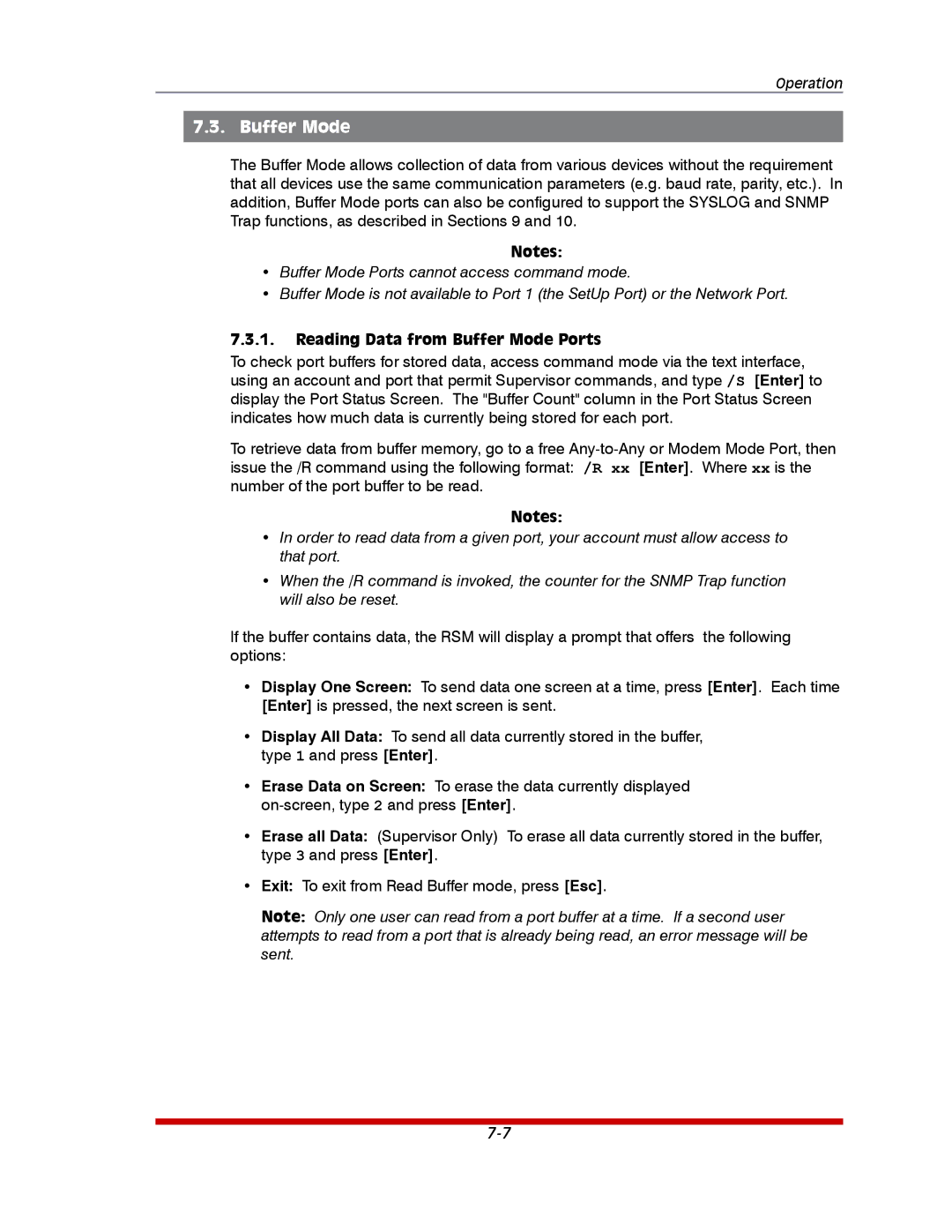
Operation
7.3. Buffer Mode
The Buffer Mode allows collection of data from various devices without the requirement that all devices use the same communication parameters (e.g. baud rate, parity, etc.). In addition, Buffer Mode ports can also be configured to support the SYSLOG and SNMP Trap functions, as described in Sections 9 and 10.
Notes:
•Buffer Mode Ports cannot access command mode.
•Buffer Mode is not available to Port 1 (the SetUp Port) or the Network Port.
7.3.1.Reading Data from Buffer Mode Ports
To check port buffers for stored data, access command mode via the text interface, using an account and port that permit Supervisor commands, and type /S [Enter] to display the Port Status Screen. The "Buffer Count" column in the Port Status Screen indicates how much data is currently being stored for each port.
To retrieve data from buffer memory, go to a free
Notes:
•In order to read data from a given port, your account must allow access to that port.
•When the /R command is invoked, the counter for the SNMP Trap function will also be reset.
If the buffer contains data, the RSM will display a prompt that offers the following options:
•Display One Screen: To send data one screen at a time, press [Enter]. Each time [Enter] is pressed, the next screen is sent.
•Display All Data: To send all data currently stored in the buffer, type 1 and press [Enter].
•Erase Data on Screen: To erase the data currently displayed
•Erase all Data: (Supervisor Only) To erase all data currently stored in the buffer, type 3 and press [Enter].
•Exit: To exit from Read Buffer mode, press [Esc].
Note: Only one user can read from a port buffer at a time. If a second user attempts to read from a port that is already being read, an error message will be sent.
